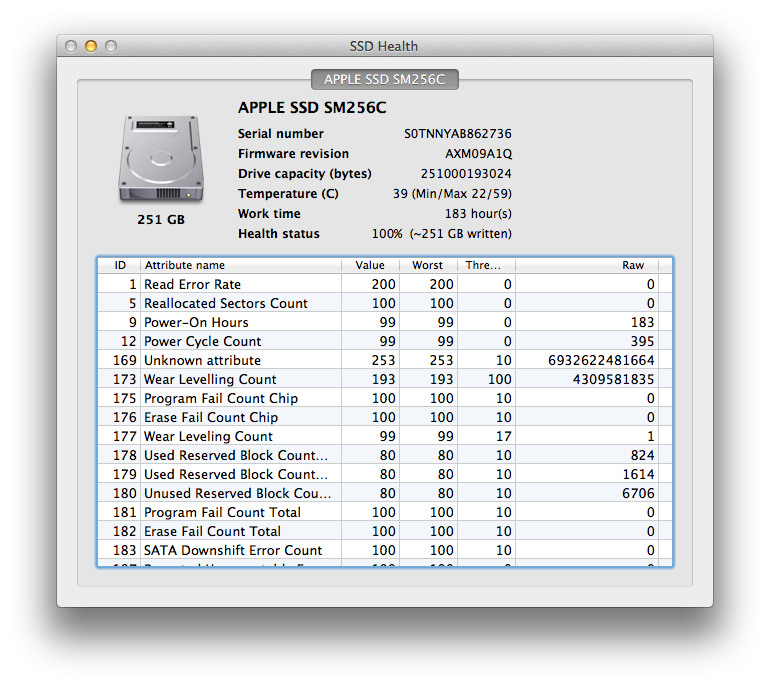

status” in the information section at the bottom of the main pane.
CHECK SSD HEALTH MAC REDDIT HOW TO
How to perform a SMART SSD test with Disk Utility: The only caveat is that Disk Utility provides only a rudimental overview of your disk’s health, essentially telling you only if it’s in good or bad health. Method 1: Check SMART Status on macOS with Disk UtilityĪs a Mac user, you can quickly and easily check the SMART status of any SSD using Disk Utility. But before we do that, we need to explain how to perform a basic SSD smart status check on macOS. Let’s take a closer look at one free and one paid SSD health checker so you can pick the one that fits your needs the best. There are multiple ways to check the health of an SSD on a Mac. Regardless of what causes the excessive wear, all M1 Mac users should test SSD health using an SSD diagnostic tool, and we recommend three such tools in the next section of this article. It could be the fact that the M1 chip is using internal storage for memory swap, or it could be an undiscovered bug in macOS Big Sur or some app used by all affected users. Unfortunately, it seems that something is causing some M1 Macs to write far more new data than what’s normal. Such SSDs can write over 80 GB of new data every day for 5 years before potentially becoming unstable, so M1 Mac users should theoretically have nothing to worry about. Even basic 256 GB SSDs come with a 150 TBW rating. What’s more, modern SSDs use wear-leveling technology to distribute data evenly across all physical sectors, prolonging the total lifespan.īecause of all these factors, most estimates put the age limit for SSDs around 10 years. While that may not sound like much, it’s important to realize that SSDs don’t degrade when reading data-only when writing new data. We know that Apple uses Toshiba TLC NAND flash chips for its SSD drives, which should endure up to 3,000 write cycles per physical sector based on the current lithography process. That doesn’t mean that they would instantly become unusable, but their users could experience major stability issues and, in extreme cases, data loss. Recently, several M1 Mac power users have shared alarming usage reports indicating extremely high drive writes over a relatively short time.īased on the wear of the SSD inside his 2 TB M1 Mac, developer Hector Martin calculated that 256 GB models could exceed their TBW in less than half a year.
CHECK SSD HEALTH MAC REDDIT DOWNLOAD
Method 3 Download a Free SSD Health Utility (Disk Drill).Method 2 Use a Paid SSD Drive Checker (DriveDx).Method 1 Check SMART Status on macOS with Disk Utility.


 0 kommentar(er)
0 kommentar(er)
